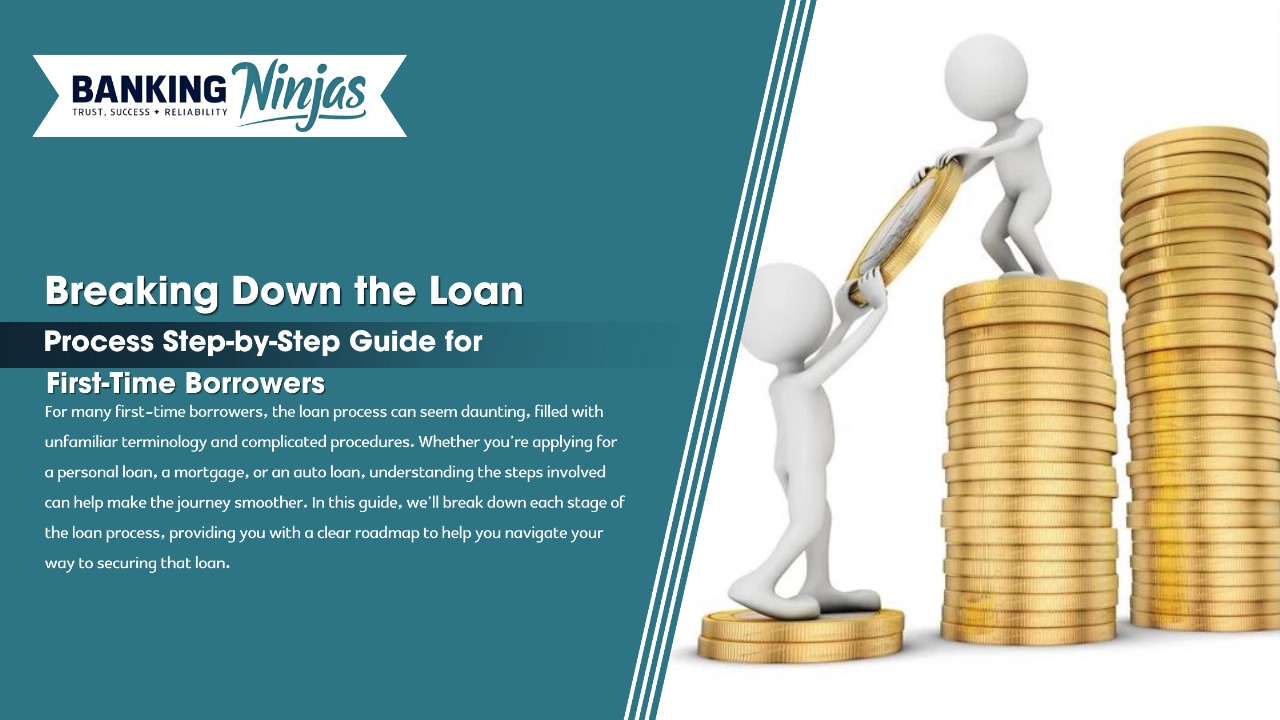INTRODUCTION
For many first-time borrowers, the loan process can seem daunting, filled with unfamiliar terminology and complicated procedures. Whether you’re applying for a personal loan, a mortgage, or an auto loan, understanding the steps involved can help make the journey smoother. In this guide, we’ll break down each stage of the loan process, providing you with a clear roadmap to help you navigate your way to securing that loan.
Step 1: Assessing Your Financial Situation
Before diving into the loan application process, it’s essential to take a close look at your financial health. Evaluate your income, expenses, credit score, and overall debt levels. A strong credit score can often lead to better loan terms, such as lower interest rates. Understanding your financial situation will help you determine how much you can realistically afford to borrow and which loan types best suit your needs.
Step 2: Researching Different Loan Types
Once you’ve assessed your financial health, it’s time to explore the various types of loans available. Different loans serve different purposes. Personal loans are flexible and can be used for anything from debt consolidation to home improvements, while mortgages are specifically for purchasing homes. Auto loans are designed for car purchases. Researching the right type of loan for your needs is crucial to avoid taking on unnecessary debt.
Step 3: Choosing a Lender
After identifying the type of loan you need, the next step is choosing a lender. You can approach banks, credit unions, or online lenders. Each lender has its own terms and conditions, including interest rates, fees, and repayment schedules. It’s important to compare offers from different lenders to ensure you’re getting the best deal for your financial situation. Pay attention to both the interest rate and the Annual Percentage Rate (APR), which includes any additional fees.
Step 4: Preparing Documentation
Once you’ve chosen a lender, you’ll need to gather the necessary documentation. This usually includes proof of income, employment status, credit history, and possibly collateral if you’re applying for a secured loan. The more organized and prepared you are, the quicker your application can be processed. Double-check that all required documents are complete and accurate to avoid delays.
Step 5: Completing the Loan Application
With your documentation in hand, it’s time to complete the loan application. Most lenders will provide an online application form, but you may also be able to apply in person or over the phone. Be prepared to answer questions about your financial history, employment, and reasons for borrowing. The information you provide will help the lender assess your ability to repay the loan.
Step 6: Loan Underwriting and Approval
Once you’ve submitted your application, the lender will review your financial information and credit history during the underwriting process. This is when they determine whether you are eligible for the loan and how much they’re willing to lend you. If your application is approved, the lender will present you with a loan offer, including the terms and conditions. This step may take a few days or weeks, depending on the complexity of your application and the lender’s processes.
Step 7: Signing the Loan Agreement
If you agree to the terms presented by the lender, you’ll be asked to sign a loan agreement. This legal document outlines the loan amount, interest rate, repayment schedule, and any fees involved. Make sure you read the agreement thoroughly before signing to ensure you fully understand the terms. If you have any questions or concerns, don’t hesitate to ask the lender for clarification.
Step 8: Disbursement of Funds and Repayment
After the loan agreement is signed, the lender will disburse the funds. This may be done through a check, direct deposit, or by other means, depending on the type of loan. Once you have the funds, it’s important to stick to the repayment schedule. Timely payments will help you avoid penalties and negative impacts on your credit score. Some lenders may offer flexible repayment options, such as automatic deductions from your bank account.
CONCLUSION
The loan process, while detailed, doesn’t have to be intimidating. By following these clear steps—assessing your financial situation, researching loan options, choosing the right lender, and understanding the terms of your loan—you can confidently navigate the journey to securing a loan. Remember that the key to successful borrowing is ensuring that you’re financially prepared and fully understand the loan’s terms and obligations. With the right preparation, the loan process can be a powerful tool to help you achieve your financial goals.










Trackbacks and Pingbacks